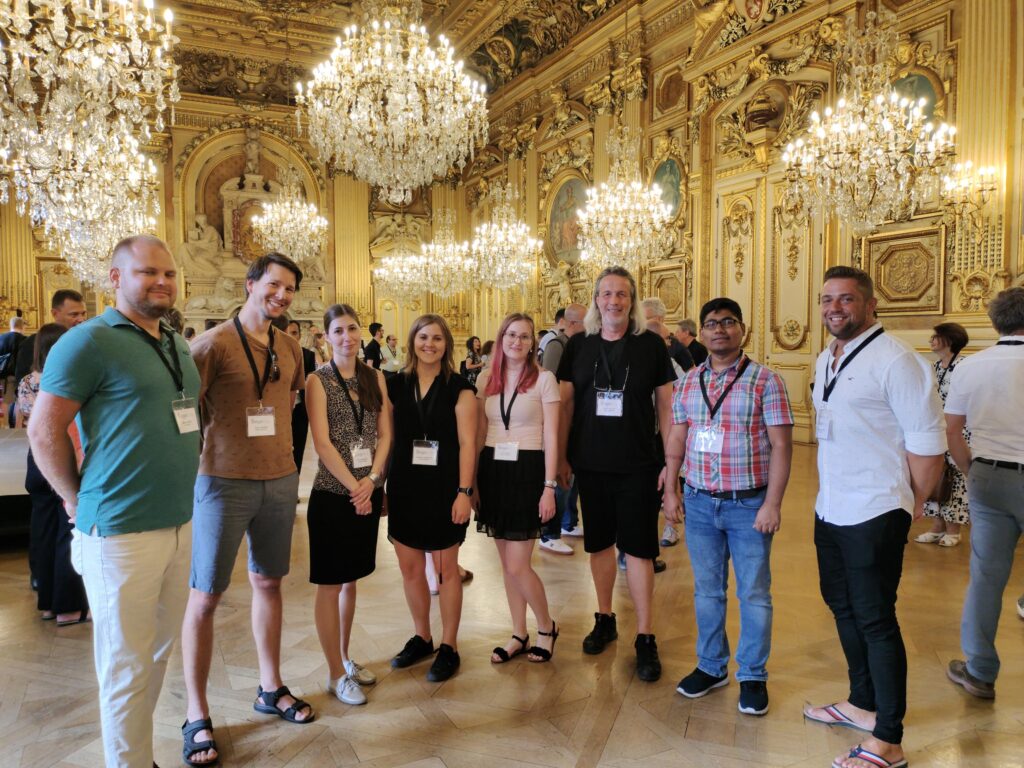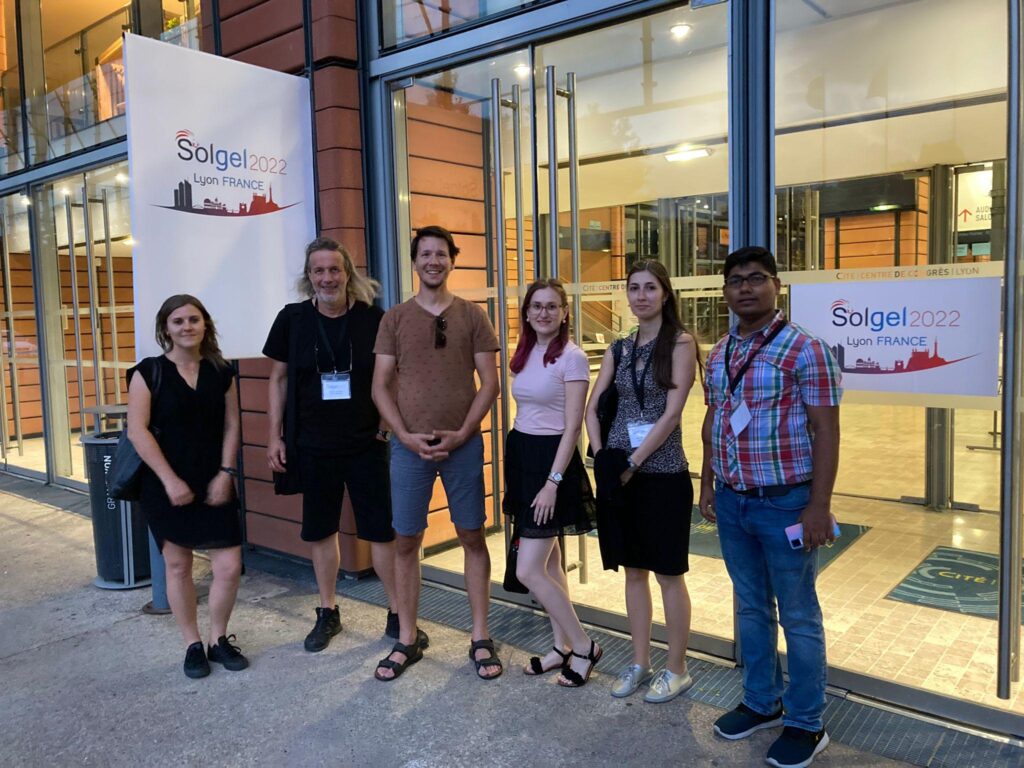From 24 to 29 July 2022, an international conference called “Solgel 2022” was held in Lyon city of France, and the six chemists from the Carbonaceous Adsorbent Group led by Václav Slovák of the Department of Chemistry, Faculty of Science (OU) participated in this event. The Sol-gel conference was organised by the Claude Bernard University […]
From 24 to 29 July 2022, an international conference called “Solgel 2022” was held in Lyon city of France, and the six chemists from the Carbonaceous Adsorbent Group led by Václav Slovák of the Department of Chemistry, Faculty of Science (OU) participated in this event.
The Sol-gel conference was organised by the Claude Bernard University Lyon 1 and the University of Lyon in partnership with the International Sol-Gel Society (ISGS). The conference brought together the best experts in the fields of materials/nanomaterials, inorganics, hybrids, and polymers prepared by the soft chemistry routes. It was the place to cross the frontiers between academia and industry and covered all aspects of materials and nanomaterials design from fundamentals to applications, in the heart of the French Chemistry Valley. The conference provided an opportunity for our chemists to present their research and to establish new collaborations with the other participants from all over the world.
Our chemists presented diverse research from fundamental studies to applications of the synthesized materials. The head of the group presented the kinetics of resorcinol-formaldehyde condensation by various techniques such as Fourier transform infra-red spectroscopy, nuclear magnetic resonance relaxometry, and differential scanning calorimetry (DSC), which opens the doors for estimation of the temperature function and kinetic modelling of the process. In addition, the glass transition during sol-gel polycondensation of resorcinol with formaldehyde was detected for the first-time using DSC which was demonstrated by Eva Kinnertová. The resorcinol-formaldehyde (RF) polymer is widely used for the preparation of carbons mainly in monolithic form, and therefore a basic understanding of the reaction kinetics of this precursor is desired to tune the final properties of carbon for various applications from catalysis, adsorption, to energy storage. Particularly, the mesoporosity in such carbon monoliths is desired for minimising the diffusion limitations and that can be tuned by varying parameters of sol-gel synthesis, which was presented by Lucie Kořená, a Ph.D. student in the group. Thermoporometry (TP), a quick characterization technique, was employed for the estimation of mesopores in such carbon samples. How promising TP is for the porosity characterization of carbons with the basics and challenges of such a technique was addressed by Gabriela Zelenková. The other alternative conventional method for porosity characterization is gas physisorption. Tomas Zelenka showed some artifacts and misinterpretations of the results from such gas physisorption measurements. On the other hand, carbons derived from bio-based sources that constitute the bioeconomy as well as a viable alternative to fossil carbon and commercial precursors such as RF polymers are highly desirable. In this context, Madhav P. Chavhan, addressed cellulose-based carbon monoliths with special focus on metal-doped (e.g., Cu, Mn, and Fe) carbon from commercial cellulose for electrochemical energy storage application.
In addition to research and exchange of research ideas with the possibility of collaboration among other researchers during the conference, our chemists visited the city centre of Lyon, with some sightseeing, and explored local foods. The visit to “The Hameau Dubœuf”, the first theme park for vines and wine in Europe located in the beautiful region of Beaujolais, was unforgettable experience.



